A great many viburnums offer excellent value for the garden with their good form and pretty flowers, which are often followed by conspicuous fruit and autumn colour.
According to the Hillier Manual of Trees & Shrubs, it is a large genus of more than 200 species (although current thinking is that the number is closer to 180) from North and South America, Europe, Asia and North Africa.
They are mostly shrubby, but occasionally make small trees, and can be either evergreen or deciduous. Many viburnums have beautifully scented flowers, although, in stark contrast, the wood can smell odious when it is bruised or cut.
Read more on the best evergreen shrubs to grow.
Jump to
- When does viburnum flower?
- How to grow viburnum
- When to prune viburnum
- When to plant viburnum
- How to propagate viburnum
- The best spring-flowering viburnums to grow
When does viburnum flower?
Although the genus offers interest throughout the year, with some flowering in winter, April is a particularly good month for viburnums, when some of the showiest are at their absolute best.
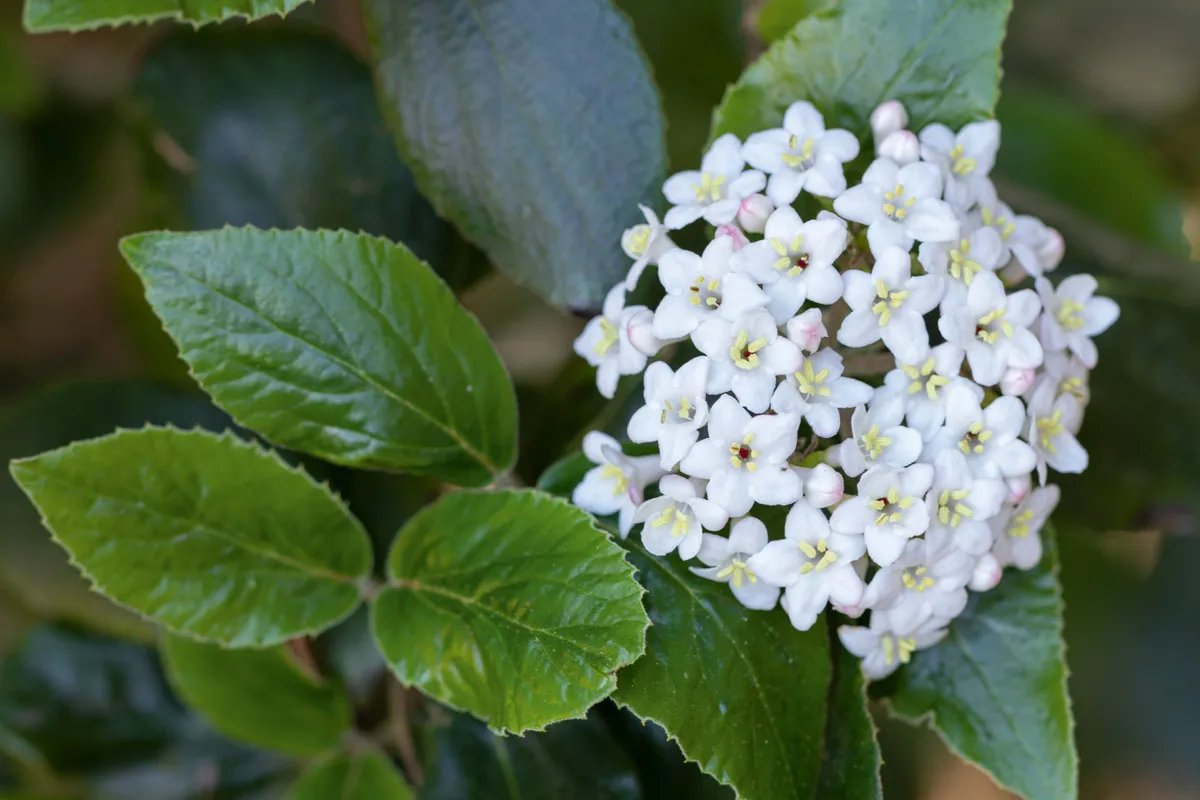
How to grow viburnum
Viburnums are easily cultivated in the garden, and with such a large range of species there is sure to be one to suit every situation and taste. They tend to be pH adaptable, but enjoy a quality, slightly acidic, free-draining soil that does not dry out, and a sunny, sheltered aspect will keep them at their best.
Viburnum tinus is a useful exception – a bomb-proof plant that is widely used in low-maintenance landscaping. It is very tolerant of salt, drought and shade. I’ve witnessed plants growing in deep shade at the centre of a group of towering Leyland cypress, and they were doing surprisingly well.
Many of the woodland species, such as Viburnum acerifolium, are also adapted to cope with poor light and competition for moisture. Viburnum plicatum f. tomentosum, on the other hand, has a fibrous surface root system that is more sensitive to drying out during extended periods of drought, and needs irrigation to prevent the leaf margins going crispy.
For extremely wet conditions, the native Viburnum opulus is particularly adept at succeeding, and is adaptable to various pH levels.
In milder gardens, Viburnum odoratissimum var. awabuki is a wonderful shrub with corymbs of white flowers and foliage that’s helpful for lighting up dark corners.

When to prune viburnum
Most plants will not require pruning, but are very compliant when reduction is called for. Prune evergreens in spring when the fear of frost has vanished – sappy new growth prompted by pruning needs time to mature – and prune back deciduous viburnums during the dormant season. Viburnum tinus, which can also be used to make a hedge, is best trimmed in the spring, though a second cut might be necessary.
When to plant viburnum
Ideally, you should plant viburnums in late autumn or winter. This will give the plant the chance to establish root growth and hit the spring running. More tender species should be planted in the spring and cosseted until established. When planting, use good garden compost or leaf mould, mix with the existing soil, back-fill and firm.
How to propagate viburnum
You can take semi-ripe cuttings in June to July, and layering is usually successful with most species in the garden. Seed propagation is also effective, but seeds will often take more than a year to germinate, as many species exhibit double dormancy and will need to go through warm and cold periods before germination occurs.
Provided they are growing well, viburnums rarely suffer from pests and diseases. Honey fungus can affect old plants, and extreme cold can also scorch the more tender species. Aphids and viburnum beetle can make the evergreen types look untidy with damaged foliage, but this is rarely significant.
The best spring-flowering viburnums to grow
Viburnum plicatum ‘Rotundifolium’
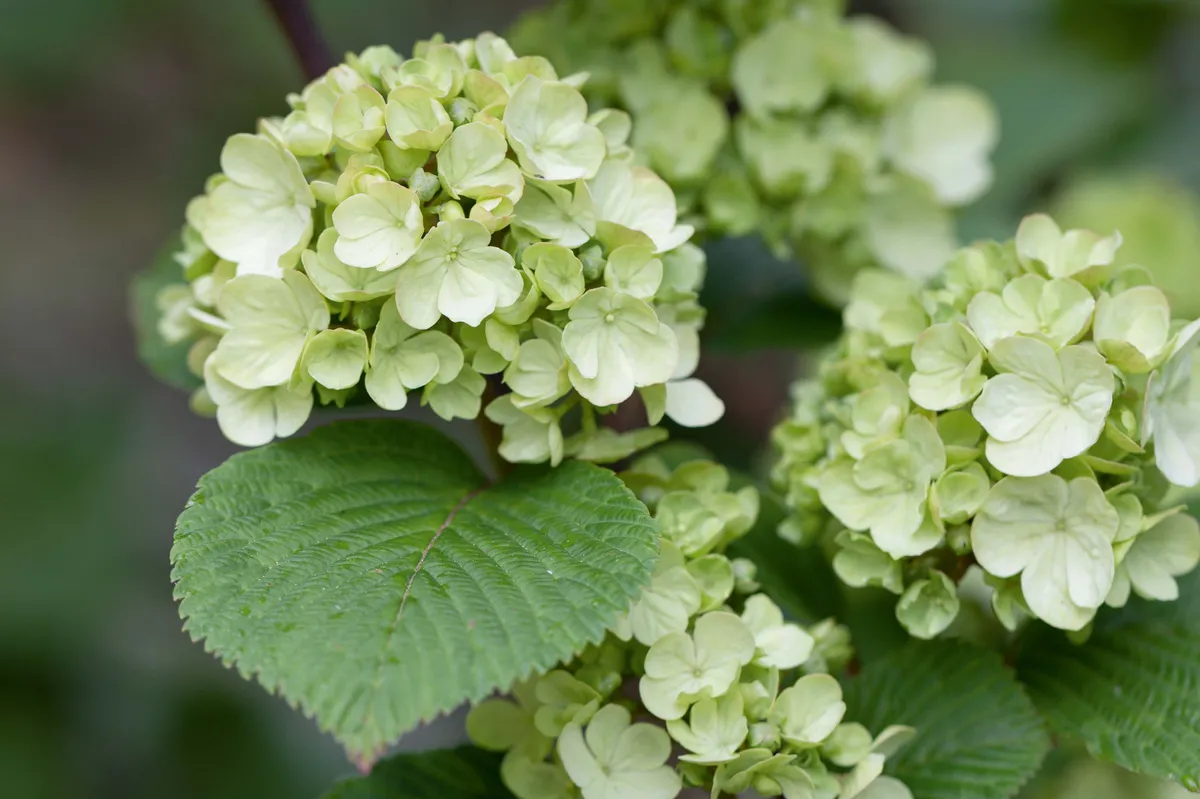
Green-tinged flowers appear in mid to late spring. They are borne in globose clusters and held in close ranks along stiff branches with roundish foliage. Tolerates shade but needs fertile soil and plenty of moisture. Height 4m. RHS H6, USDA 5a-8b.
Viburnum x burkwoodii ‘Park Farm Hybrid’

A strong-growing shrub with a more spreading habit than the original cross (Viburnum carlesii x Viburnum utile). It also has slightly larger, better-quality blooms in spring, that are strongly blushed pink in bud. Fragrant and good for cutting. Height 2.5m. AGM. RHS H6.
Viburnum x juddii
SQUIRREL_TEXT_13099852
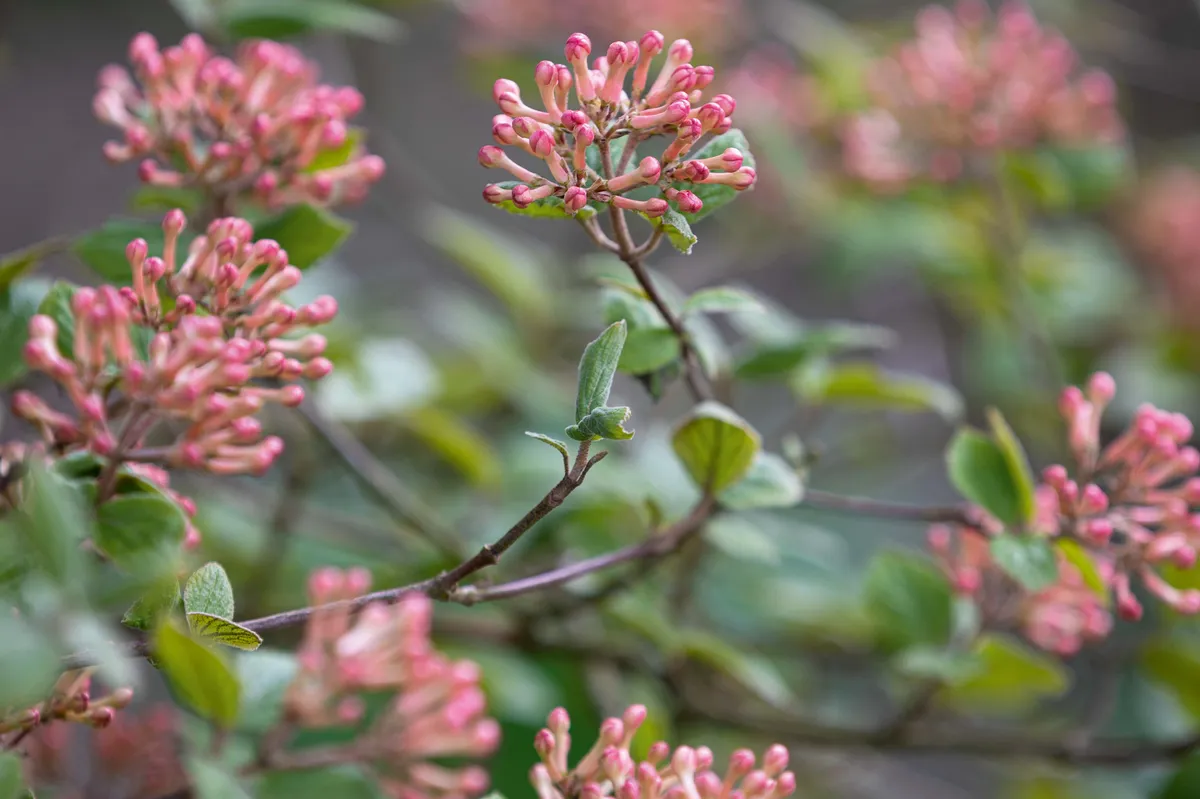
This floriferous Viburnum carlesii hybrid was raised by propagator William Judd at the Arnold Arboretum in the 1920s. It’s a rounded, bushy shrub decked in clusters of strongly scented, white flowers tinged with pink, in mid to late spring. Height 3m. RHS H6, USDA 4a-8b.
SQUIRREL_13099852
Viburnum buddlejifolium
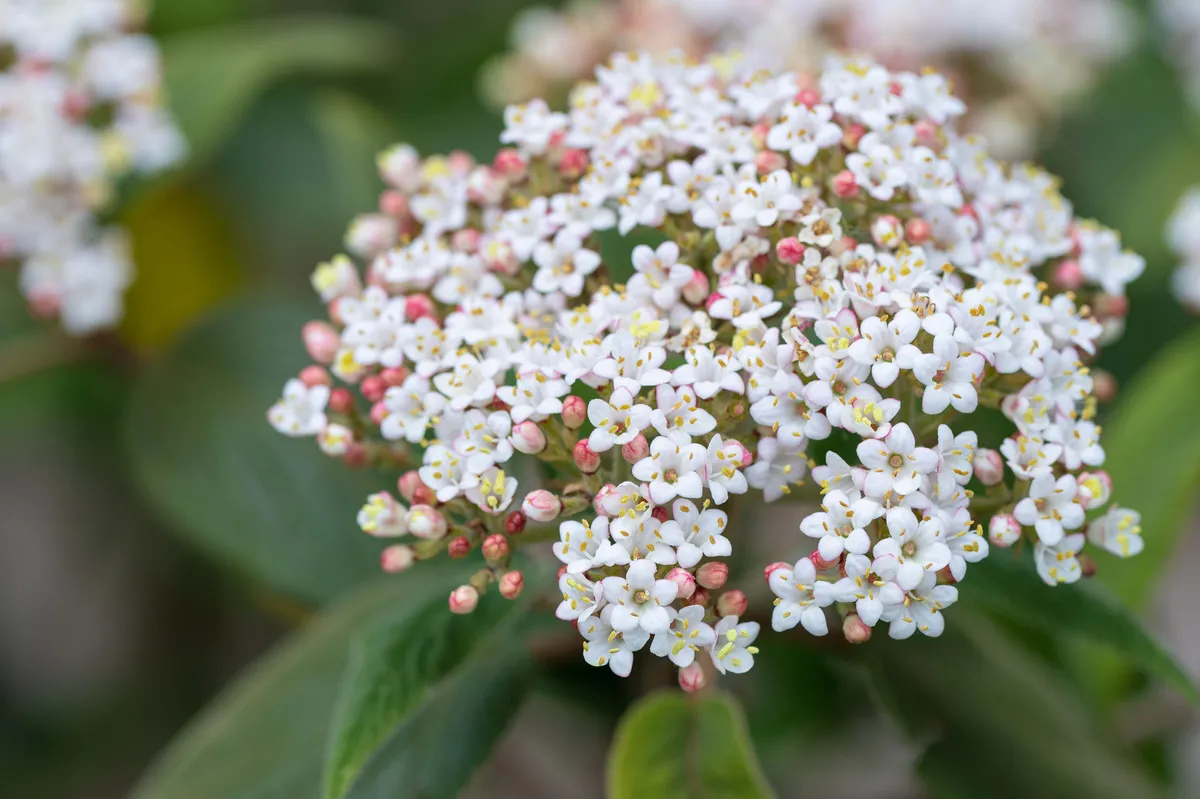
Makes a large and distinctive shrub with leaves that are velvety pale green above and felty grey beneath. The white flowers emerge in April and May from pink buds. Red fruits turn black over time. Height 2.5m. RHS H6.
Viburnum carlesii ‘Aurora’
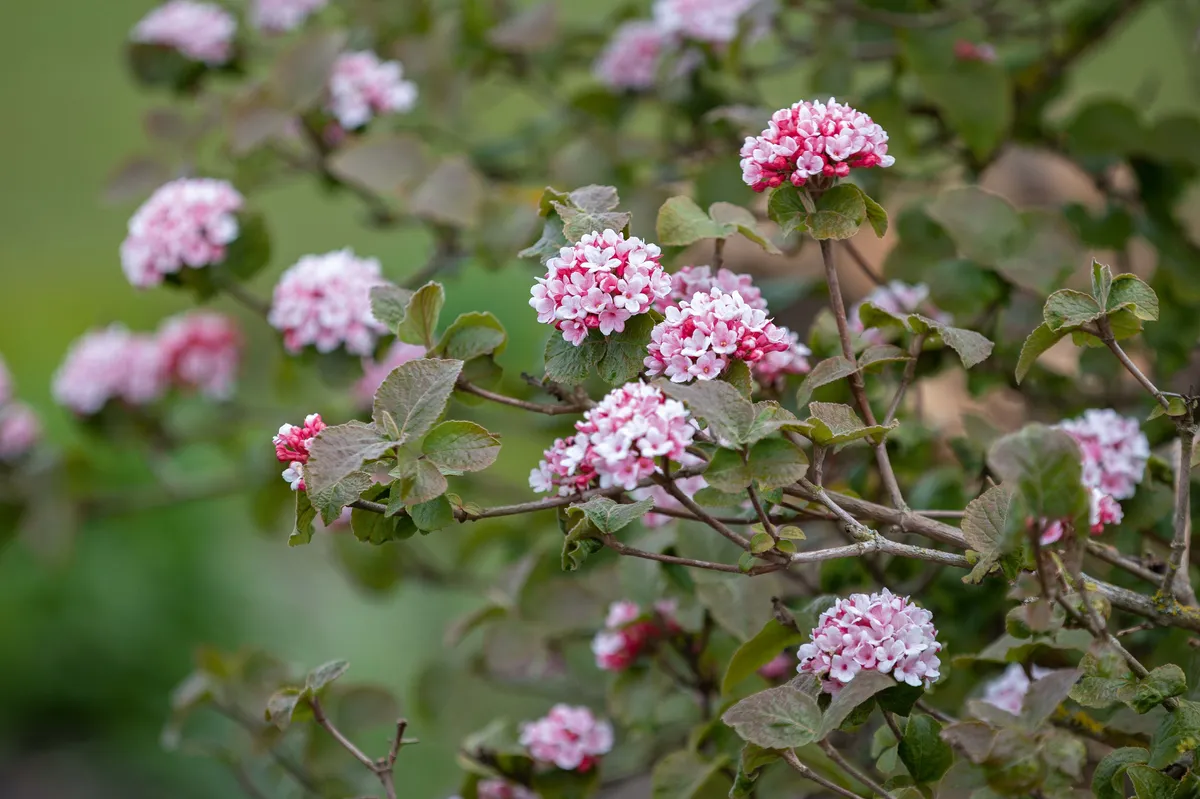
A very charming deciduous shrub that is a larger-flowered version of the species. Its deep-pink buds open into pinkish-white blooms. The flowers are held in tight conical corymbs in April and May, with a delicious spicy fragrance. Height 2m. AGM. RHS H6, USDA 4a-7b.
Viburnum x burkwoodii ‘Chenaultii’

A more refined form of this popular hybrid with a slightly smaller frame, and smaller leaves. White, scented flowers open from pink buds in April. Best in a rich, moist soil, but will also cope with limy conditions. Height 2m. RHS H6, USDA 4a-8b.
Viburnum ‘Pragense’

Raised in Prague, this large evergreen shrub has elliptic, corrugated leaves that are dark and lustrous above and white-felted beneath. Creamy-white flowers are produced in terminal clusters in May. Height 4m. AGM. RHS H6, USDA 5a-8b.
Viburnum rhytidophyllum ‘Wisley Pink’
SQUIRREL_TEXT_13099854

This evergreen shrub with deeply veined, dark-green leaves has flat cymes of deep-red buds opening to pink flowers that emerge in spring. Red fruits follow, which ripen to black. Height 3m. RHS H6, USDA 5a-8b.
SQUIRREL_13099854
Viburnum x rhytidophylloides ‘Willowwood’

A vigorous Viburnum lantana x Viburnum rhytidophyllum hybrid. In May, the flowers are held on short cymes forming corymbs in white with hints of yellow. Can be semi-evergreen in cold winters. Height 4m. RHS H6. USDA 5a-8b.
Viburnum opulus ‘Roseum’
SQUIRREL_TEXT_13078030
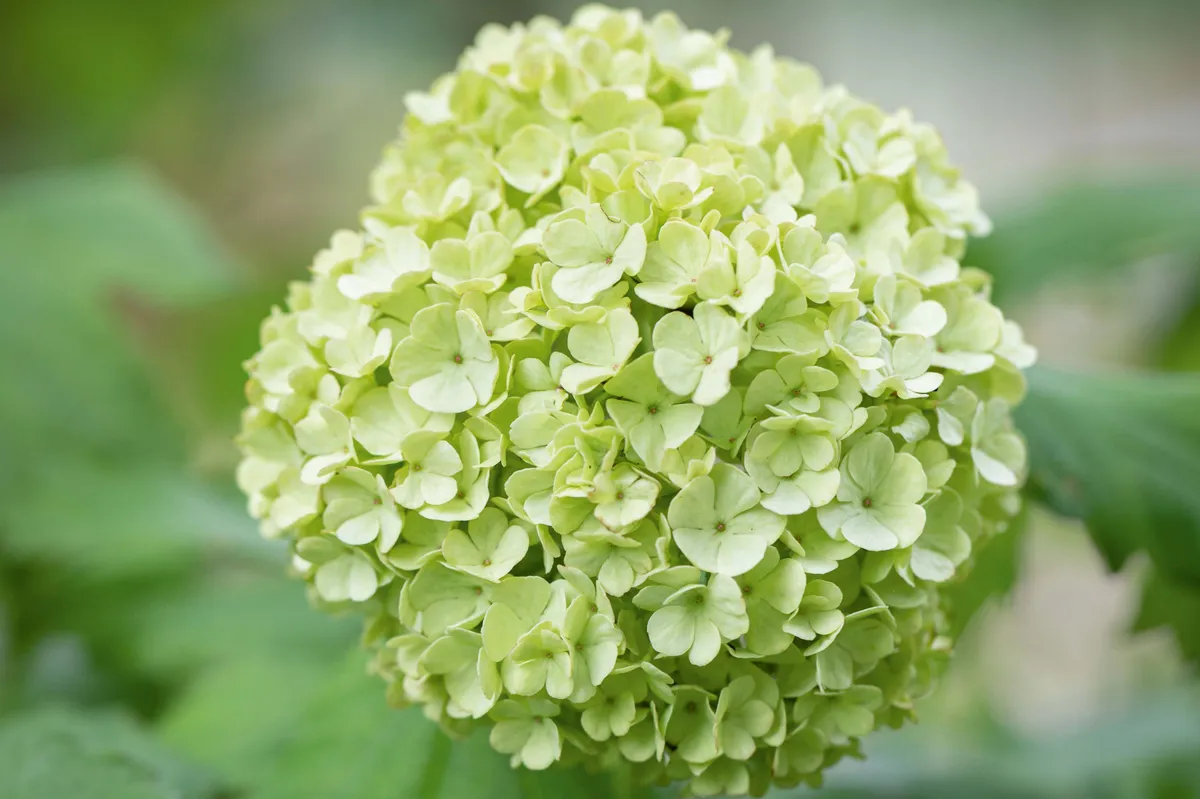
A vigorous, deciduous shrub with large, snowball-like, sterile flowers in May and June that are creamy-white with a green tinge and can age to pink. The maple-like, fresh-green leaves take on a purple tinge in autumn. Height 5m. RHS H6, USDA 3a-8b.
SQUIRREL_13078030
Viburnum plicatum f. tomentosum Kilimanjaro (= ‘Jww1’ )
SQUIRREL_13099899
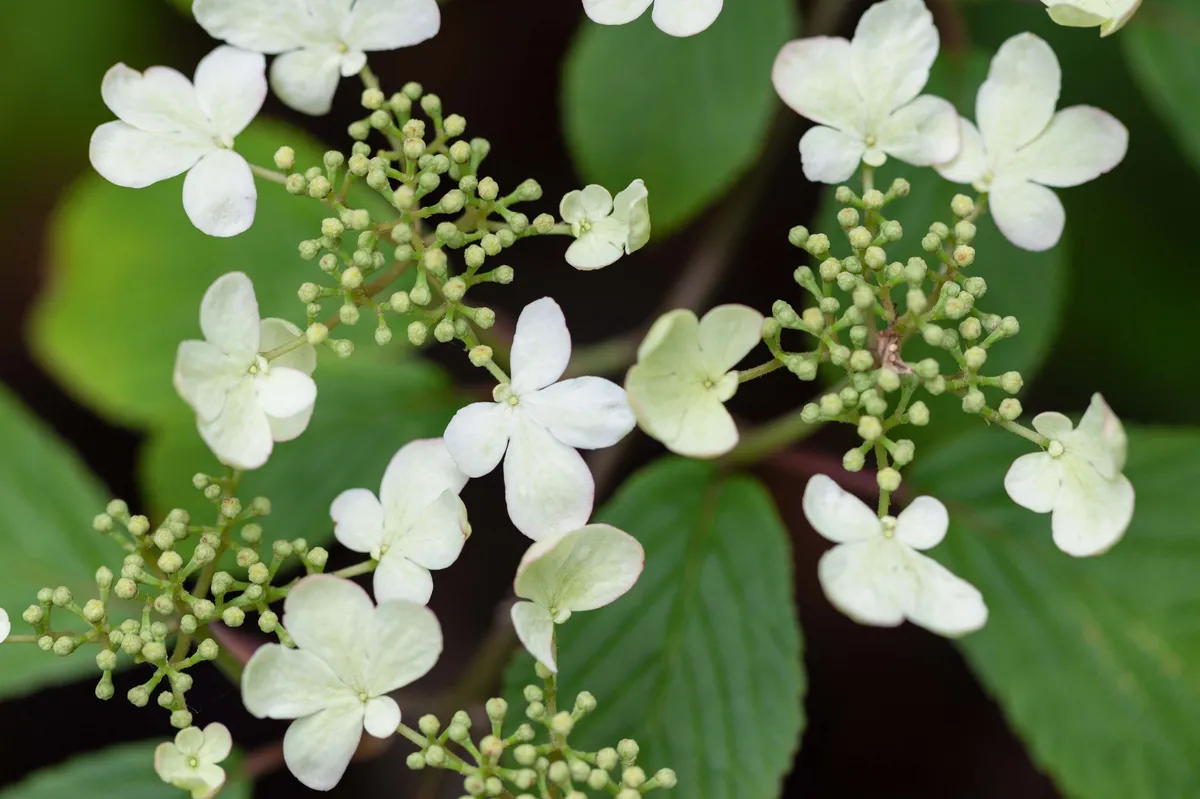
Masses of white lacecap flowers, which become suffused with pink as they age, appear atop the tiered branches in spring. Berries and autumn colour follow. Height 2.5m. RHS H6, USDA 5a-8b.
SQUIRREL_13099899
Viburnum plicatum ‘Grandiflorum’
SQUIRREL_TEXT_13099900

A beautiful spreading shrub with a tiered branching habit. In May and June, sterile white flowers, flushed pink, are held in two ranks along the upper parts of the branches. Fruits start red then ripen to black, and autumn colour is notable. Height 2.5m. RHS H5, USDA 5a-8b.
SQUIRREL_13099900
Viburnum plicatum f. tomentosum ‘Cascade’
SQUIRREL_TEXT_13099908
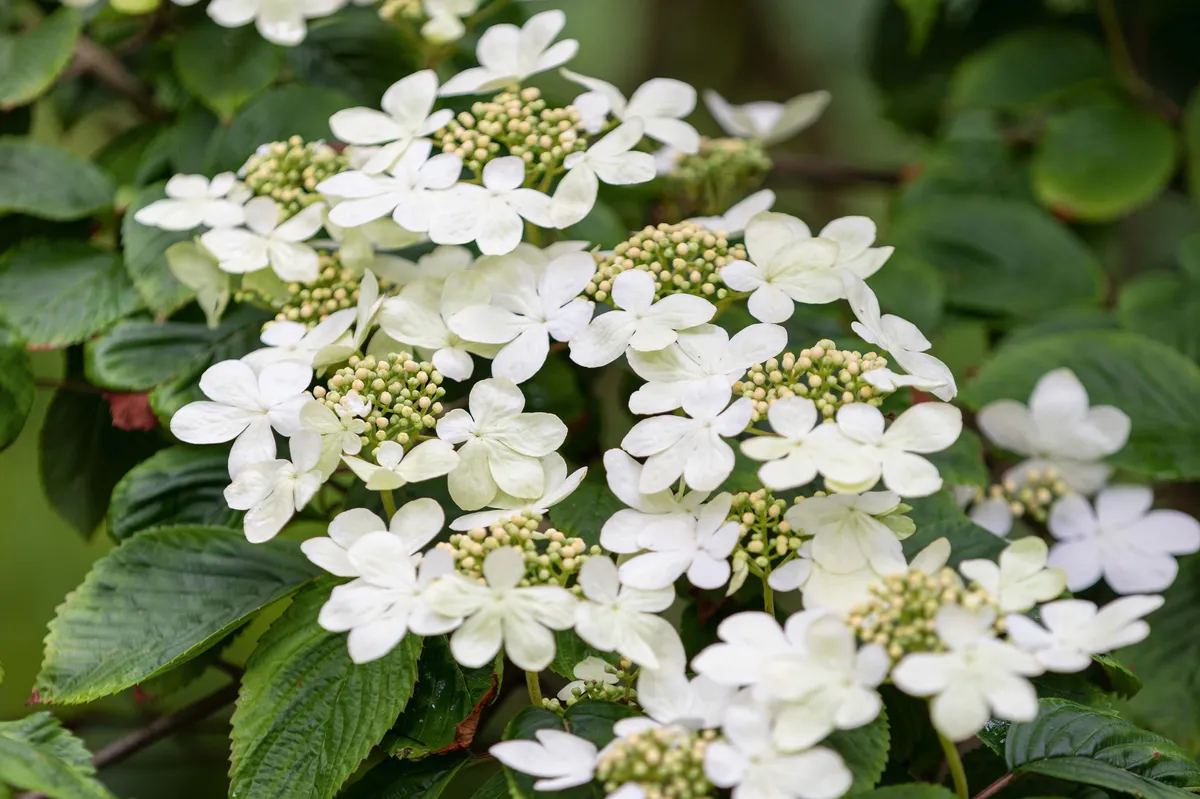
Its wide-spreading, tiered branches bend in the middle to create a cascade effect that is enhanced when it’s covered in large white umbels in spring. These are followed by abundant red fruit. Height 4m. AGM. RHS H5.
SQUIRREL_13099908
Where to buy and see Viburnum
• Burncoose Nurseries, Gwennap, Redruth, Cornwall TR16 6BJ
• Crûg Farm Plants, Griffith’s Crossing, Caernarfon, Gwynedd LL55 1TU
• Larch Cottage Nurseries, Melkinthorpe, Penrith, Cumbria CA10 2DR
• Pan-Global Plants, The Walled Garden, Frampton Court, Frampton-on-Severn, Gloucestershire GL2 7EX
• Penwood Nurseries, Penwood, Newbury, Berkshire RG20 9EW
• RHS Garden Hyde Hall*, Creephedge Lane, Chelmsford, Essex CM3 8ET
*National Collection holder